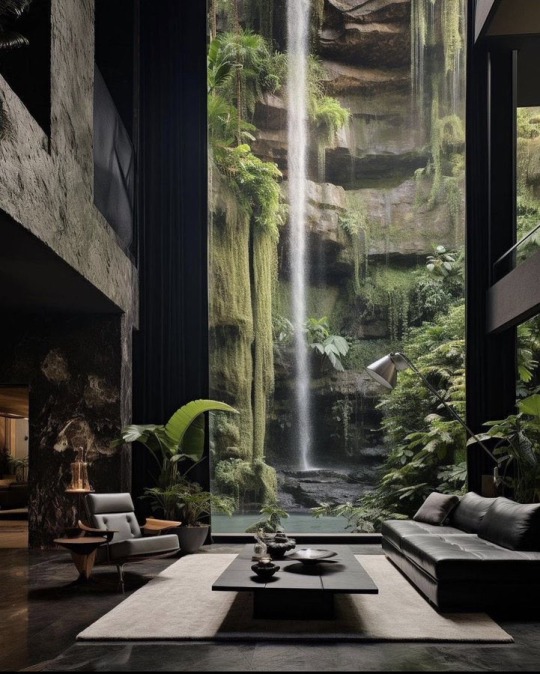Don't wanna be here? Send us removal request.
Photo





‘Instituto Marchiondi Spagliardi’, school complex Baggio - Milan, Lombardy, Italy; 1953-58 (abandoned nowadays)
Vittoriano Viganò
see map | more information 1, 2, 3, 4 | related video
via “Das Werk” 48 (1961)
156 notes
·
View notes
Text

Westkopf Building (1963-67) of Germanisches Nationalmuseum in Nürnberg, Germany, by Sep Ruf with Harald Roth
78 notes
·
View notes
Photo

“La Pagoda”, JORBA Laboratories San Blas, Madrid, Spain; 1965-67 (demolished, 1999)
Miguel Fisac Serna
+ information 1, 2 | demolition
via “Concrete Quarterly, 87” (Winter, 1970)
343 notes
·
View notes
Photo




Alcuin Library at Saint John’s University St. Joseph, Minnesota, USA; 1964-66
Marcel Breuer, Hamilton Smith
«The requirement of a library in every monastic house was implied in the Rule itself when its author, carrying on a practice already established in the sixth century, stipulated that during Lent each monk was to receive a book from the library, the bibliotheca, “to be read in its entirety from the beginning.” Hence the medieval monastic libraries began as book chests or book cupboards, housed in the sacristy of the conventual church or later in the north range of the cloister walk, abutting the south wall of the church where the winter sun could warm the patient reader or copier of manuscripts. These were modest collections by our standards: in twelfth century England the largest consisted of some 600 volumes held at Christ Church. They were however representative of the learning of the times and preserved not only Holy Scripture and patristic exegesis, but the secular literature of ancient Rome and nascent Europe as well. In the book presses of the cloisters Augustine and Vergil, Horace and Isidore of Seville spoke on with silent eloquence, steadily contributing to a new civilization. The vision is a proud and noble one. Nevertheless for some readers the enduring and the most endearing picture of monks and books may be that described by Cuthbert, monk of the eighth century monastery of Wearmouth and Jarrow, who relates Saint Bede’s last days. At the close of a long life of uninterrupted study, Bede had to his credit a list of, works of which any modern scholar might be proud. Nevertheless he stayed at his translation of Saint John’s Gospel, his final work, to his last hour. Informed by his secretary, a youth of the monastery, that one sentence remained, Bede replied, “Very well, write it down.” After a short while the lad said, “Now it is finished.”, “You have spoken truly,” he replied, “It is well finished. Now raise my head in your hands, for it would give me great joy to sit facing the holy place where I used to pray, so that I may sit and call upon my Father.” In that posture he died, an archetype of the man of learning grown wise and humane and tolerant in the school of the Lord.»
see map part 1 & 3
from “A New Library for Saint John’s, ca. 1964" and “The Library of Saint John’s University”, via Saint John’s University Archives
47 notes
·
View notes
Photo

IBM Complex, Boca Raton, Florida, 1968-74
(Marcel Breuer)
“[…] the dramatically patterned surfaces of IBM’s buildings were understood as metaphorical residues or imprints left upon architecture by the passage of IBM’s primary activity - data processing or "pattern recognition” - through the medium of architecture.“ (112)
Read my brief review of John Harwood’s outstanding recent book The Interface: IBM and the Transformation of Corporate Design, 1945-1976:
http://bit.ly/yLvPZY
280 notes
·
View notes
Photo

Radiator factory, Dammarie-les-Lys, Eugène Freyssinet, 1926-28.
View this on the map
267 notes
·
View notes
Text

Elementary and Middle School (1960s) in Nellingen, Germany, by Werner Luz
217 notes
·
View notes
Text
1 note
·
View note
Photo

State Circus, Chisinau, Moldova, built between 1977-81 Architect: Ala Kiricenko, Simion Shoihet, Anatol Colotovkin. © BACU #socialistmodernism
78 notes
·
View notes
Photo

Museum on the Seashore, Brazil, 1951 (Project)
(Lina Bo Bardi)
486 notes
·
View notes
Photo

Gimnasio “Gustavo Díaz Ordaz” Ciudad Deportiva de la Magdalena Mixhuca, México DF, 1968
Arq. Manuel González Rul
Foto. Guillermo Zamora
Gynasium ‘Gustavo Diaz Ordaz” Palace of Sports, Sports City, Mexico City 1968
538 notes
·
View notes
Photo

អរុណសួស្តីថ្ងៃពុធ (at ជីវិត និង ស្នាមញញឹម) https://www.instagram.com/p/COeNog9FjhcDCqtOik3BX356buG-s6OGBWpTkk0/?igshid=14u28pv5d3dag
2 notes
·
View notes




